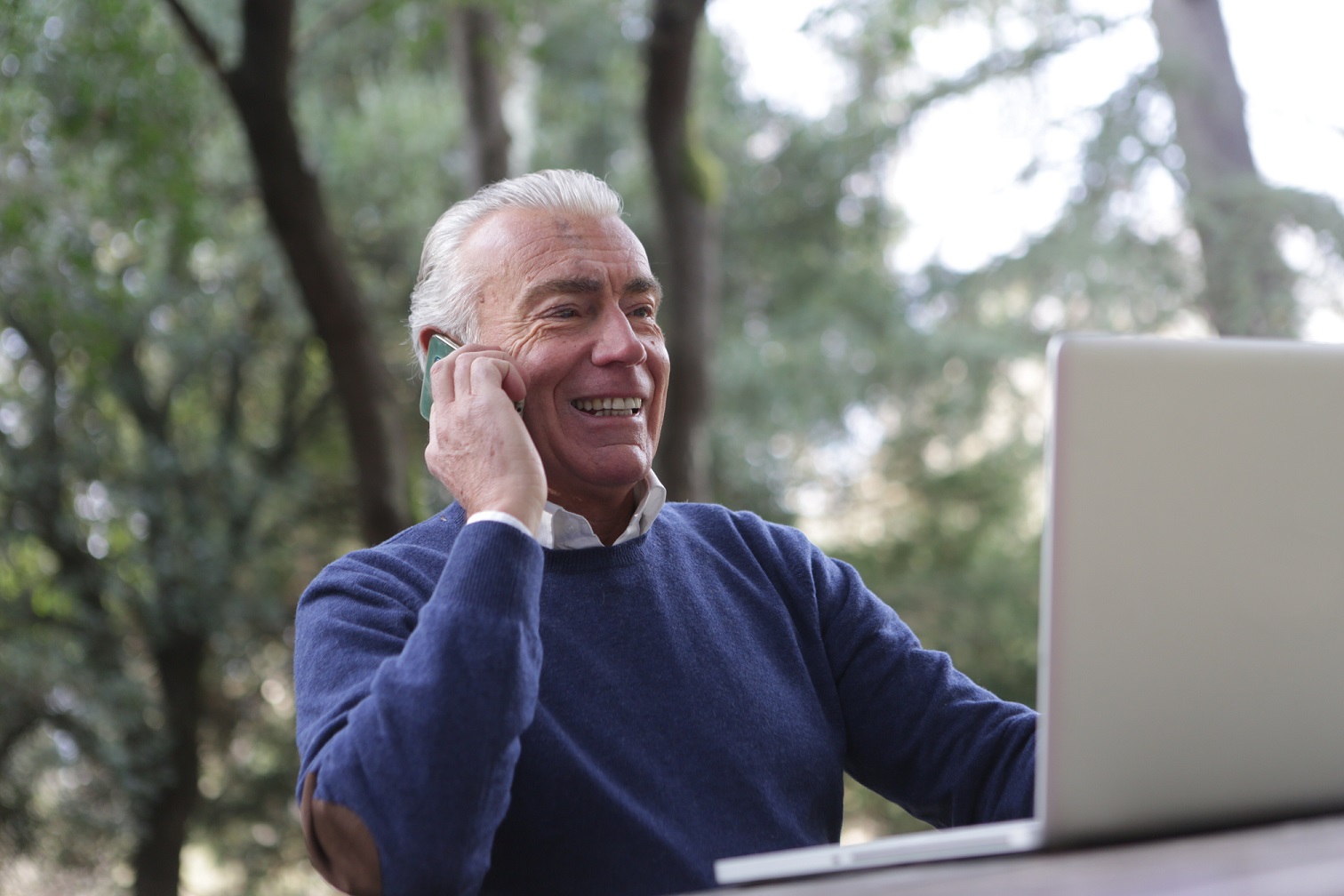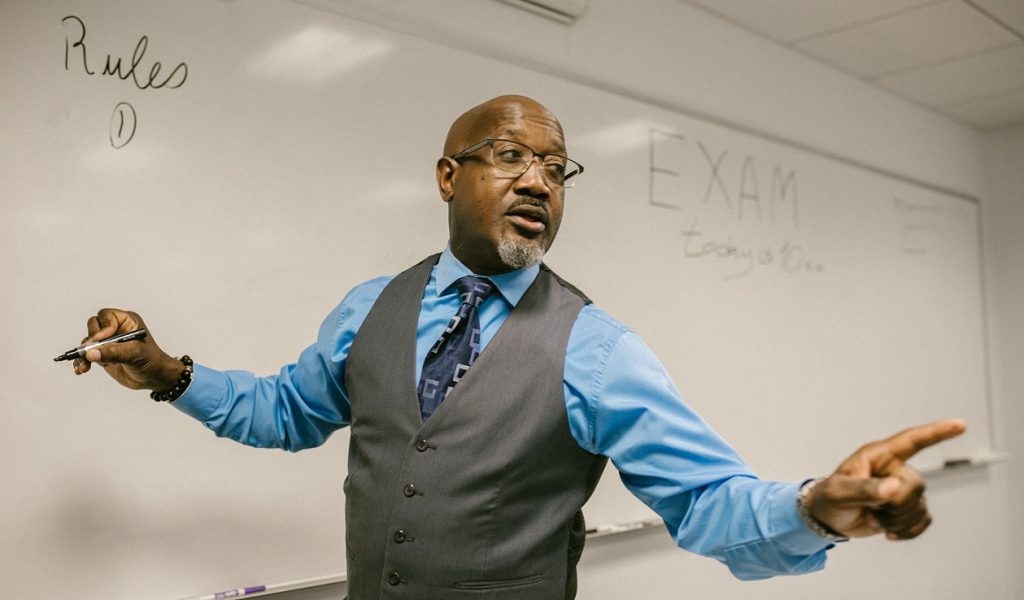Tagged Under:
Stay Connected During Online Instruction
Find ways to feel more connected and less isolated from students and colleagues when when teaching remotely.
To paraphrase English poet John Donne, no man or woman is an island. He wrote that we are all “a piece of the continent, a part of the main.”
But teaching in a virtual class setting can sometimes feel like being marooned on a desert island. Sure, there’s interaction via videoconferencing, yet some days, it can get lonely — as if there’s an ocean between you, your students and your colleagues. Hello? Is anyone out there?
The good news is that you don’t need to send a message in a bottle to forge strong relationships. Let’s look at some ways to feel connected as a music educator, even if you are teaching via your own private “island.”
Feel More Connected with Your Colleagues
Virtual Coffee Chats: We’ve all heard of the buddy system. Research suggests that friendships, especially during times of anxiety, actually allow us to reframe negative events as challenges instead of disasters. So it’s important to keep building relationships with your fellow faculty. Schedule time to bond over a virtual coffee or virtual lunch, and make sure the discussion isn’t only about work topics — invest your time and effort to keep in touch with people on a deeper level. It’s good for your career development and your stress levels.
Convene to Enjoy a Virtual Program: Perhaps in the past, you savored local performances with your music department colleagues. If attending a performance as a group isn’t feasible right now, you can still “gather” to enjoy a virtual show. For example, try a Tanglewood night. It does Wednesday evening video streams with artists like the Danish String Quartet, Silkroad Ensemble, Lucas and Arthur Jussen, and Paul Lewis, recorded at beautiful concert venues all over the world. Last spring, Yamaha kicked off YamahaLiveFromHome, presenting concerts and music tutorials.
 Host a Game Night: If you used to hang out with coworkers for happy hour, pivot to a virtual game night and test out online group activities like Drawasaurus. Bonus points: Prior to the event, email links for cocktail, mocktail and appetizer recipes, so everyone can be sipping and nibbling similar libations and snacks, adding to the sense of camaraderie.
Host a Game Night: If you used to hang out with coworkers for happy hour, pivot to a virtual game night and test out online group activities like Drawasaurus. Bonus points: Prior to the event, email links for cocktail, mocktail and appetizer recipes, so everyone can be sipping and nibbling similar libations and snacks, adding to the sense of camaraderie.
Go Old School: Yes, you can still pick up the phone! Don’t forget the power of a kind call or a thoughtful voicemail. And if someone has done you a solid, drop a handwritten thank-you note instead of automatically turning to email. A study in the Journal of Happiness found that writing notes of gratitude increased participants’ feelings of life satisfaction and reduced depression. So not only are you spreading good vibes with your thank you, you’ll feel happier yourself simply by busting out that stationery you have been meaning to use.
Feel More Connected with Your Students
 Mix it Up: Scientists tell us that music boosts creativity, and stretching your students’ creative thinking skills improves their cognition and enhances their learning. So in addition to your music lesson plans, throw in a few unexpected twists. Try a game of charades or turn off your microphone and have them guess what you’re saying by reading your lips. Play a quick scavenger hunt by giving students a list of three items and have them race around their houses to find them, before returning for the online learning.
Mix it Up: Scientists tell us that music boosts creativity, and stretching your students’ creative thinking skills improves their cognition and enhances their learning. So in addition to your music lesson plans, throw in a few unexpected twists. Try a game of charades or turn off your microphone and have them guess what you’re saying by reading your lips. Play a quick scavenger hunt by giving students a list of three items and have them race around their houses to find them, before returning for the online learning.
Creativity can also allow for effective ways of conveying assignments or instructor communications as well. For example, John Thomas, a first/second grade teacher, turned his reading assignment into a roller coaster ride.
Plan One-on-One Communications: It can be frustrating for some students to feel “seen” in virtual learning environments like Zoom, so if you are teaching a group, be sure to schedule time for one-on-one communications.
Establish set virtual office hours, where you can touch base with students. Do they need help tuning their instruments? Feedback on a solo? Do they want to stop by just to say hi? This is also a good time to gauge emotional and social needs. Do they require any additional resources or support?
Depending on district policies, music educators may also be able to use texts or cell phone messages as a way to ping students to stay in touch. Or drop students a postcard in the mail, telling them they are doing a good job learning a new instrument, mastering a challenging piece of music or just that they are a pleasure to have in class. Young kids love getting mail, but even older students will be surprised and pleased by this personal greeting.
Feel More Connected the Natural World
Ideally, you’ll be able to take a short break or two between videoconference classes and staff meetings at some point during your day. (See more about The Power of a Stress-Relieving Routine.) But for times when you can’t get out for a stress-relieving walk, reconnect with nature by having a plant near your work station. Viewing greenery in micro-breaks as little as 40 seconds can restore the brain’s ability for sustained attention, reports a study published in the Journal of Environmental Psychology.
If fauna is more up your alley than flora, take a few minutes and pop into the webcams at explore.org, which has live video feeds of animal habitats from all over the world. It’s refreshing to suddenly be eye-level with an eagle’s nest or underwater in a tropical reef. Deep breaths … you’re ready to return to the school’s online learning platform, refreshed.
Feel More Connected with Your Purpose
Music and music education are more important than ever because they promote invention, problem-solving and imagination. Music weaves us together at a time when we’re all getting a blunt reminder on how interdependent humans are, and how being distant from each other is really challenging. So, make time to reconnect with why you pursued a teaching career in the first place. This might be by writing in a journal, listing three things each day that went well with your students. Or perhaps turn to an inspirational read, such as Mark Nepo’s “The One Life We’re Given.”
But have faith that what you’d doing is meaningful. As cellist Yo-Yo Ma recently told the Washington Post, music is like touch, and during the pandemic, so much of our ability to touch other humans has been taken away from us. “You can’t touch, you can’t hug, you can’t shake hands,” he said.
“But what music does, its sound moves air molecules,” he continued. “So when air floats across your skin and touches the hairs of your skin, that’s touch. That’s the closest thing to someone actually touching you. … That’s what music can do.”

















